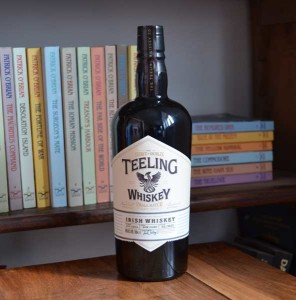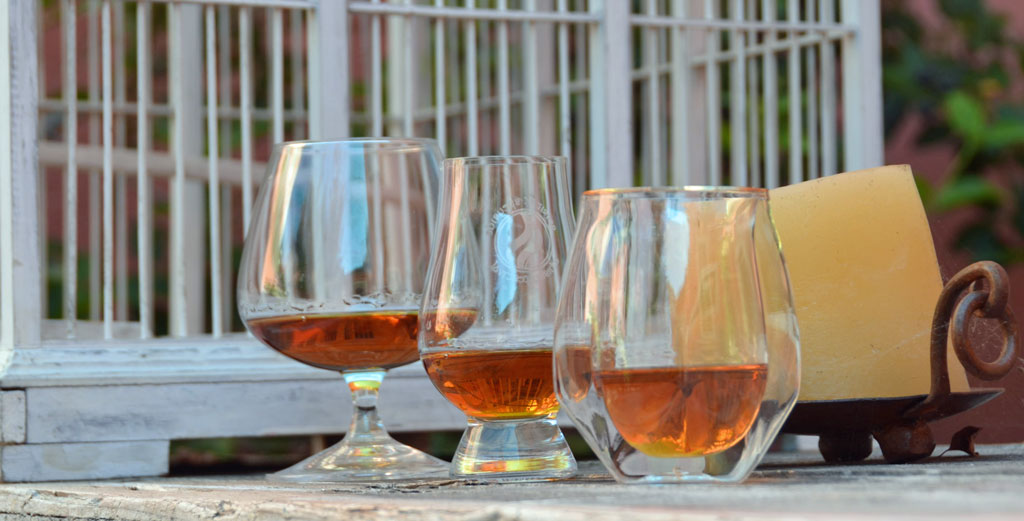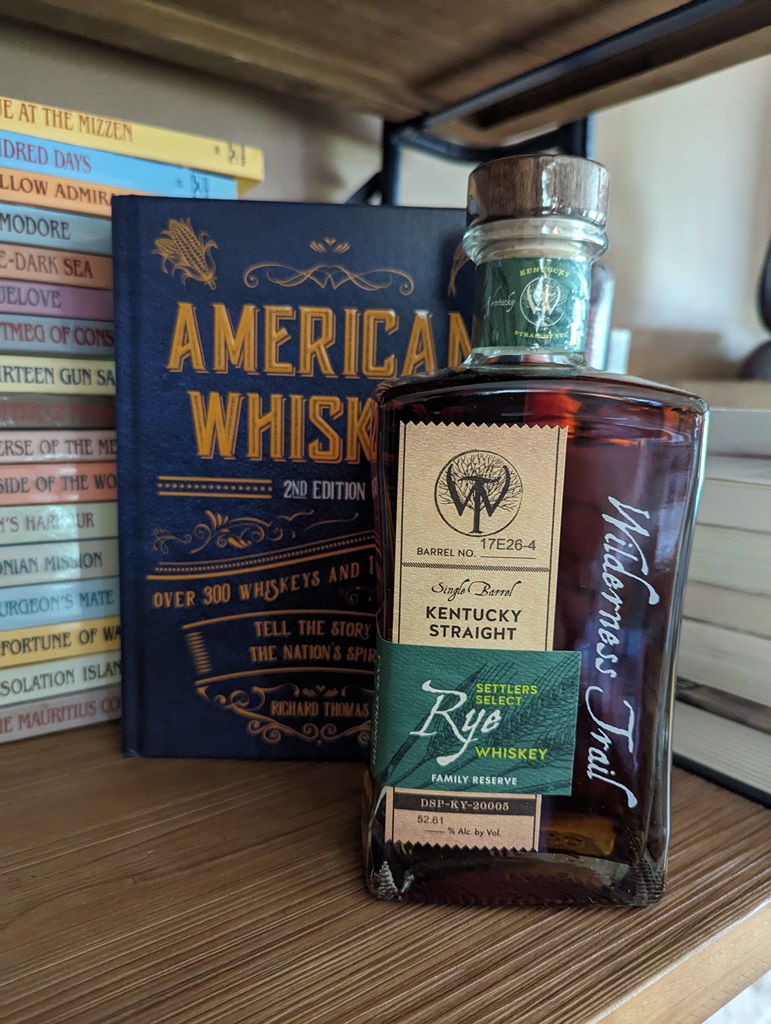Q&A With Alex Chasko, Teeling’s Master Distiller
By Richard Thomas

(Credit: Teeling Distillery)
Much of the DNA of Teeling Whiskey comes from Cooley Distillery. When John Teeling started this plant in 1989, it was only the third operating distillery in Ireland, and it’s only independent one. Nowadays, Cooley is owned by Beam Suntory, and the Teelings have all moved onto other projects.
John Teeling’s sons, Jack and Stephen, went on to start Teeling Whiskey Company, drawing in large part on Cooley whiskey stock they had a hand in making. But the Teelings brought more with them than just casks of whiskey; they also brought the services of a distillery manager, Alex Chasko. When I first met Alex, the Teeling distillery was basically a freshly constructed concrete vault, and they were still trying to get their loading dock plans approved. So, it was good to catch up on what he has been doing since the company won the race to open Dublin’s first new distillery in modern times.
RT: You got started in craft brewing in Portland. So, I have to ask: what is your favorite brew in Ireland?
AC: My favorite brew … that’s a very difficult question. I think at the moment there’s really two breweries that are making some great beer in Ireland. One of them is called Wicklow Wolf. They make a range of lovely ales. And another one that’s dear to my heart would be the DOT Brew. DOT Brew is run by a guy named Shane Kelly, and Shane’s making some amazing off-the-wall, very low-volume, unique beers. One of them that I love is a 11% stout that he aged in a bourbon cask and added praline and hazelnut to. And the title of the beer is Contains Nuts.
RT: The beer and whiskey barrel exchange–sending a whiskey barrel to a brewery to age beer, and then sending that barrel back to the distillery to finish a whiskey–has become quite a fixture in Ireland. I haven’t had a chance to try your own take on it, Teeling Stout Cask. Please, do tell about both the beer and the final whiskey?
AC: So, I think that it’s a great opportunity for us to work with other producers and to have a bit of our magic rub off on each other. We’ve teamed up with Galway Bay that has the Two Hundred Fathoms Irish Stout. It’s the highest rated Irish stout on ratebeer.com. And to have that aged in Teeling whiskey casks is a real honor and a privilege. And then we get those casks back from them and we age our whiskey.
It’s for me, as a blender, a chance to highlight what is exactly happening with Teeling Small Batch and the impact that the rum cask has on small batch and the result of that marrying process there.
Teeling Small Batch brings that little rum and raisin quality to the beer. When you put a beer in a cask it brings up the malt quality of it. The malt comes forward more and the hops are maybe reduced in their impact. So it’s a more malt-forward beer.
What the beer does to the whiskey is it starts to bring in those beer flavors into whiskey. Now, there is a crossover with malt. We both have malted barley, but the hops and the fermentation is different with beer. The carbonation is even different. Our stout cask release has a CO2 brightness to it that you wouldn’t get otherwise.
We’ve had an opportunity to work with a variety of beer, wine, other spirit producers, really pushing the boat out there and trying to tie it all back to Teeling Small batch.

(Credit: Richard Thomas)
RT: Teeling got started with sourced whiskeys, although it’s a little odd to call it sourced, seeing as how so much of it came from Cooley and was basically inside the family. You yourself worked at Cooley for a couple of years too! The distillery has been operating for several years now. Has your in-house production found its way into or superseded stock for the sourced whiskeys yet?
AC: We have stock that’s the family reserve, which was part of the Teeling family’s stock. What I think is really interesting for us, as opposed to other distilleries with that sourced material, is that the Teelings and myself were part of the production of it originally. And the whiskeys stayed the same; we’ve stayed the same. It’s the distillery that’s changed. So it’s not like we went out and bought it from another distillery.
AC: Now onto your in-house spirit, which has your fingerprints all over it. Another one I haven’t gotten to try yet is Blackpitts. I’m familiar with your spin on pot still whiskey. What is the Teeling take on peated malt?
AC: What we wanted to do with peated malt was to try and make it different than what you would get from Islay. On Islay, you’re talking about double distilled. You’re talking about a strong possible bandaid, TCP, iodine flavor from it, which isn’t really what you would associate with Irish whiskey.
So we were using peat as an innovation. Now, it’s not innovative in that it’s a common practice in Scotland. What we had to ask was how are we going to make it Irish? So we triple distilled it. We were going to continue with the triple distilling tradition, and I think that that does a great job of taking the fruit that’s produced from the yeast and concentrating all of that, and that third distillation.
The third distillation also greatly reduces the impact of the peat. In order to get anything out at the end of it, we had to go big at the beginning. You start off with a very heavy 55 ppm malt and we end up with around 15 ppms of phenols in the final.
The flavor profile of Teeling Blackpitts vs Islay is kind of that bridge between Ireland and Islay. We age a third of it in Sauternes casks, and it’s got a lovely minerality from the Sauternes. It’s really got a lovely finish to it. There’s loads of fruit that’s coming from that triple distillation. The bourbon cask has also given us a good amount of fruitiness in it, and it has a more smokey bacon quality coming through from the peat

(Credit: Kurt Maitland)
RT: Your latest is a 32-year-old Irish Malt finished in Purple Muscat. You might recall that when we first met I was still living in Portugal, so that finish is near and dear to my heart. What is it about Purple Muscat that makes it a match for that ultra-aged malt you got your hands on?
AC: The Purple Musket cask is a brilliant match for our ultra-aged expressions, where we’ve got some very old single malt that’s still got bags of flavor in it. The Purple Musket is standing up against that, and, if anything, accentuating the jammy fruits and the sweetness and that nectar quality that’s in there already. I think that it’s done a brilliant job of taking what we did previously with Sauternes and showing that we can go in a different direction, that we can be innovative even in the ultra-old, ultra-rare category and come out with things that other people aren’t, and using casks that other people aren’t.
There was a bit of risk there, but it was a calculated risk. We’d had success with the Sauternes and I trusted our supplier to give us casks that were going to be high quality.
RT: What was the Teeling experience like during the pandemic? Over here, a lot of distillers turned to making hand sanitizer. Was there much of that in Ireland? How did the lockdowns impact what was going on at the distillery?
AC: There was a real demand for hand sanitizer in the beginning. We did do some of it. We didn’t sell it though. What we made was more to try and keep the independent off-licenses open. We would give it to off-licenses with the idea that they would then be allowed to have their customers sanitize their hands coming in so they could stay open, because they legally had to. And we also helped out local community organizations, local healthcare providers, trying to keep things going as opposed to trying to create a commercial product.
The pandemic had a big effect on us as far as visitor numbers. It was very strange. We’d always had a visitor experience and you got used to people coming through every 20 minutes on a tour, and your workplace being part of that. As well as them wanting to talk to you and them asking questions, such as, “What are you doing?” And sometimes when you were fixing a pump or trying to repair a leak or something wasn’t working, explaining to somebody who really had no business asking what was going on wasn’t the best situation. But what was really odd and what I really missed was those people being around for those two years. We were actually pretty lonely in the cellar.
Although visitor numbers returned steeply once we reopened to the public. It happened almost overnight. It’s great to see the community coming back together again post pandemic, and we’re starting to see life coming back to the Liberties.

(Credit: Richard Carleton Hacker)
RT: I recall seeing an interview with you a few years back where you said Balcones Baby Blue was your favorite whiskey that wasn’t Teeling. That answer and your reasons why — all the innovation in American craft whiskey — stuck with me, because it was such an interesting one. I want to follow up: what whiskey that you didn’t make has caught your fancy lately?
AC: I think that when I gave that answer, what I really liked about that Balcones whiskey was that it was using a different source of corn and you could taste that on the final product. I think what’s happened since then is that the number of whiskeys, both domestically in the United States and internationally throughout Europe and Asia, have just exploded. And there is a whole range of new distilleries out there.
To pick one that we don’t make, I like whiskies from Scandinavia; you’ve got Kyrö in Finland. They make some great whiskeys. They use rye a lot in their whiskey and I think that they do a good job of having that rye influence in that. You’ve also got what used to be called Box, but is now called High Coast, making great whiskeys. When I was back home over the summer in Portland, I was out at Clear Creek and they’ve got McCarthy’s, which is a very old single malt from there. The McCarthy’s that they’re making now is a brilliant whiskey. It was always a brilliant whiskey. But I think they’ve done a good job keeping that alive. I think there’s a lot of, too many to mention, other people out there. You can go to just about any country and there’s somebody who’s making a good whiskey and they’re making it in their own way. I think what I really like if I’m looking for something that I’m not making is something where somebody’s taken a risk, they’ve decided that they’re going to do it their own way, and that they’ve made a quality product.



